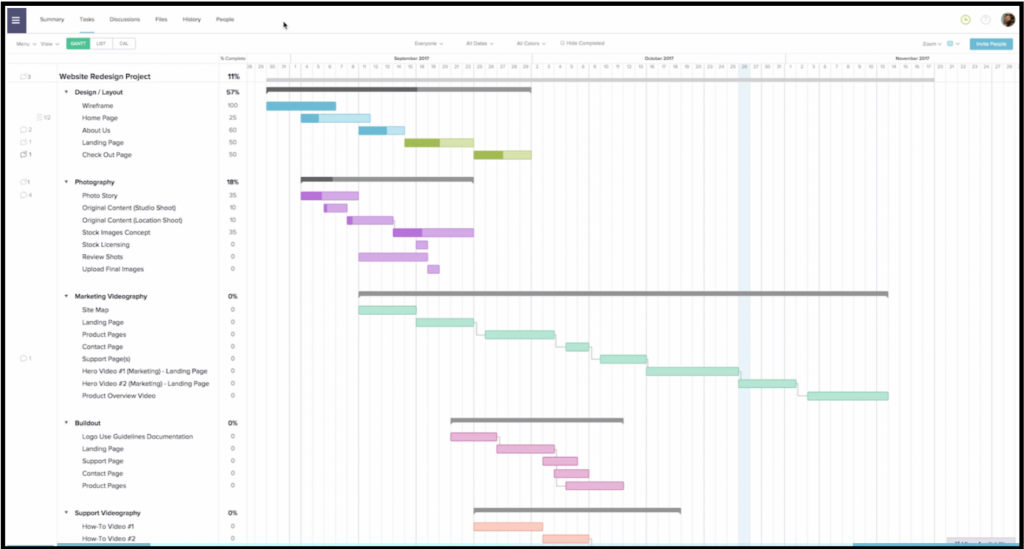Congratulations! You’re a Project Manager

You’ve narrowed down your selection. You’ve committed to one partner. You’ve prepared the best you can. And nine months later, congratulations! You have a brand new website. And who ensured that this new creation arrived both in-scope and on-budget? Your Project Manager (PM). Over the lifecycle of a site rebuild, the PM is the one that shepherds your build from kick-off to launch and every hand-off in between.
If marketers are the invisible hands that move sales, PMs are the ones moving your projects forward. The better the PM, the less you’ll notice them — as all will seem calm. With no PM, you have a rudderless vessel without a captain. Here’s what it’s like to avoid shipwrecks for a living.
Project Management: Everything in Its Place
You’re a PM and you’ve just been assigned a new project. Time to celebrate? No. You’re planning. You’ve been gifted a seemingly bottomless bucket of hours as dictated by the SOW. Your job at its core will be reconciling the potential of all these work hours with the pesky realities of any project, ranging from the technical hiccups of audio problems during a Google hangouts meeting to the dire possibility that your main point of contact on the client’s side leaves their position/the project halfway through.
You’ll be tethering what your client/team wants to do with what they can do — reminding everyone of the logistical limits of the build by showcasing the opportunity to be more efficient. You’ll reduce redundancies and hesitate on reinventing processes. You’re the voice of reason. The adult in the room.
Project Management 101: If it’s not on the screen or page, it hasn’t been said yet.
Basics of Project Management: Dually Noted
You’ll always need to have an agenda and will be fastidious about recording everything — every bit of correspondence, meeting, deliverable, milestone. You’re the official keeper of records and should always be taking notes of your own. Internal team check-ins/ideations and client meetings/presentations will be scheduled and rescheduled. You’ll have the following tools at your disposal:
- Jira: a ticketing system that tracks and prioritizes every workflow task
- Confluence: a collaborative workspace for clients and teams to share correspondence, notes, plans and deliverables
- Gantt Charts: an intuitive drag-and-drop scheduler that accounts for team availability and workload

Your professional PM purview will include the following:
- Leading and tracking regular work sprints
- Building out team processes
- Relaying the weekly team status
- Interfacing with development, design, content, marketing and sales teams for seamless hand-offs
But this is just the beginning.
People Management
Even with perfect records and schedules, things will inevitably go wrong from time to time on a project. And as the PM, the onus is on you to right them. When something goes awry that’s not a missed milestone, then it’s almost always distilled to miscommunication. These can come at any time in any form, from a misinterpreted note on the design direction to a lack of clarity around the proposed SEO strategy. When this happens, you’ll have to actively and promptly clarify matters over email, phone call, video chat, Confluence post, and in-person (if possible).
You’re actively managing the expectations and experience for the client and your team as the official voice and ear for both sides. All channels of communication pass through you and you’re tasked with keeping these transparent. You need to anticipate what your client wants before they do; to articulate what your team needs before they’ve begun to talk. If you can pull this off while keeping all the details in order and everything in scope, you have a chance.
Pro Project Manager Tips
- Your tools are only as good as your process
- Mitigate surprises
- Silence is golden
- Get it in writing
- Save everything
- Don’t overcomplicate things
- Protect your team
- Don’t pretend you know everything
- Listen to everyone
- Be willing to fail
AM to the PM
Your own timeline as a PM is front-loaded — if you’re on point, most of your work on a website rebuild should taper off by the time it gets handed off to development. But what about post-launch? Welcome to the world of client retention, which requires clear terms on the retainer agreement and maintaining correspondence, along with trying to provide the client more than site bug-fixes by mining site analytics to anticipate what their next digital needs will be. Your job is never really finished.
As a Project Manager, you’re a client-whisperer, air traffic controller, firefighter, translator, therapist, conductor, coach — all the while being thoroughly organized. You streamline processes and allocate resources to help guide an idea into reality; to take what could have been a cluster of confusion into a shared success.
And as soon as it’s over, you’ll be given another project with another seemingly bottomless bucket of hours. What are you going to do with them?
